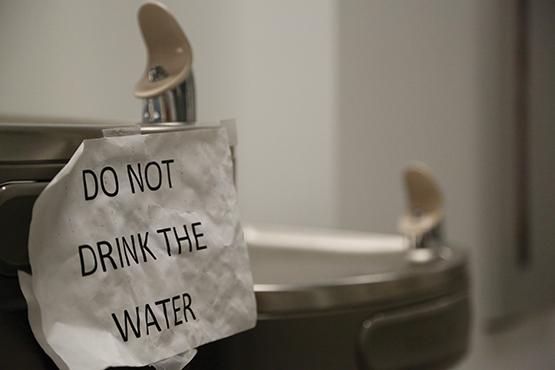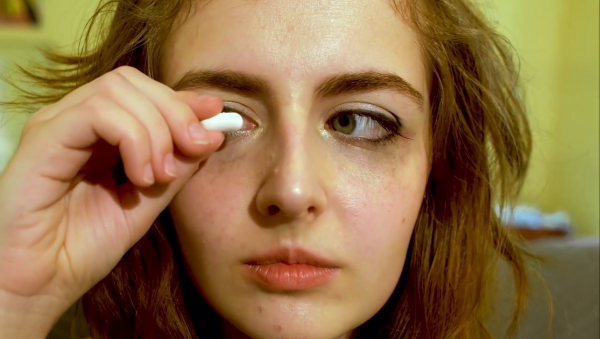Bacteria-laden water persists in Science Building

Photo by Dave DeLuca/The Record
Signs are posted on all available water fountains and sinks warning people of unsafe water.
Don’t drink the water.
At least, that’s what the signs posted across the Science Building warn students and staff at Buffalo State.
Last March, high levels of bacteria were found to be present in the water in the Science Building. Since then, all drinking fountains have been shut off and “do not drink the water” signs are posted anywhere there is access to the water.
The State University Construction Fund, which is responsible not only for the construction of SUNY facilities but also their maintenance and repairs, is in charge of coming up with a way to end this water issue.
Thus far, response from State University Construction has left much to be desired.
Since the problem was first noticed, a daily “flushing” of the building’s entire water system now takes place. This leaves water throughout the building heavily chlorinated.
With water fountains no longer operational, water coolers have been installed so students and staff have something to drink.
Buffalo State is awaiting SUNY Construction to propose a solution, interim President Howard Cohen said at the Feb. 14 College Senate meeting.
The chlorination process has lowered bacteria levels to safe standards, he said, but Cohen noted that while the water is safe, it may not taste pleasant.
M. Scott Goodman, chemistry department chair, says that SUNY Construction’s track record on this issue is less than encouraging.
“I feel that the Construction Fund has not been as responsive as many of us would like,” Goodman said. “They have continued with the same strategy for seven months with little or no effect. There doesn’t seem to be a new plan yet, nor do I sense any urgency in developing a new plan. There is a sense among building residents that if they are going to do something new, they need to make a decision about that soon so they can do the job over this summer, so the impact on students will be minimized.”
Goodman said chemistry students are able to use the building’s tap water for their experiments and, other than a few interruptions to water service due to pipe installations, the academic inconvenience has been minor.
Ashley Hooks, senior biology major from Buffalo, said that the water does have some negative impact on her lab work.
“As far as school work is concerned, in the anatomy laboratory we are unable to use one of the sinks to rinse off our equipment because of the incorrect installation of the pipes,” Hooks said. “Also, for experiments in the lab it is generally said that only distilled or deionized water should be used, not only in the experiments but for cleaning the glassware as well. The bacteria in the water overall makes it harder for both students and teachers to properly conduct classes and experiments.”
At the Senate meeting, Goodman called on President Cohen to look at possibly going outside SUNY Construction to develop a “Plan-B” to get the issue resolved sooner rather than later.
Steve Shaffer, manager for design and construction at Buffalo State, said that bringing in a private company is an option the college has explored.
“It’s certainly an option,” Shaffer said. “And we have given some thought to that. But the contracts are with the SUNY Construction fund and the contractors that built the building. So we feel there’s some obligation for the contractors to remedy this problem. If we attempt to remedy it on our own, we have very little recourse back to the contractors who installed the water system.”
Shaffer said that while there is no timetable for a permanent resolution to the bacteria problem, Buffalo State is being extra conservative.
“What we don’t want is to have people being fearful of the water in the building,” Shaffer said. “Although all of the most recent test results have been well within EPA standards for safe drinking water, Campus Services will continue providing water coolers, chlorinating the water and flushing the system daily so that there is less opportunity for bacteria to hide in the system.”
Email: [email protected]
Twitter: @MikeVProvenzano






